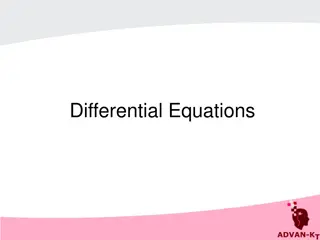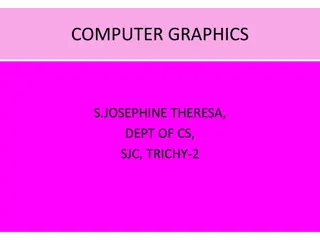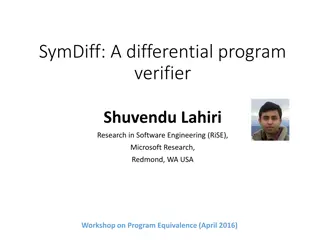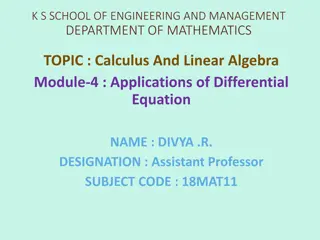Understanding Differential Evolution: An Overview of the DE Algorithm
Differential Evolution (DE) is an Evolutionary Algorithm (EA) proposed for continuous function optimization. It uses vector differences to perturb the population, deviating from traditional crossover and mutation methods. DE involves mutation, perturbation, and various mutation schemes like DE/rand/1. This summary covers the initialization, mutation steps, and the complete DE family of schemes presented by Price and Storn.
Download Presentation

Please find below an Image/Link to download the presentation.
The content on the website is provided AS IS for your information and personal use only. It may not be sold, licensed, or shared on other websites without obtaining consent from the author. Download presentation by click this link. If you encounter any issues during the download, it is possible that the publisher has removed the file from their server.
E N D
Presentation Transcript
What is differential evolution? Differential Evolution (DE) is an EA for continuous function optimization proposed by Kenneth Price and Rainer Storn in 1994 DE is also a population based algorithm, in which each individual is called an agent, and is often represented as multi-dimensional real vector. The basic idea is to use vector differences for perturbing (mutating) the vector population, instead of conventional crossover and mutation used in GA.
More specifically DEs basic strategy can be described as follows: Initialization: an initial population is generated randomly with a distribution uniform Where, i=1,...,N (N: population size) j=1,...,D (D: length of the agent)
Mutation (perturbation): randomly select three vectors that are different, subtract two of them and the differences are applied weight given to them by a factor and finally add the difference to the third vector difference An agent x is perturbed in two steps: Step 1: Find perturbation vector u:
The Complete DE Family of Storn and Price Actually, it is the process of mutation, which demarcates one DE scheme fromanother. In the former section, we have illustrated the basic steps of a simple DE. The mutation scheme uses a randomly selected vector Xr1 and only one weighted difference vector F (Xr2 Xr3) is used to perturb it. Hence, in literature the particular mutation scheme is referred to as DE/rand/1. We can now have an idea of how different DE schemes are named. The general convention used, is DE/x/y. DE stands for DE, x represents a string denoting the type of the vector to be perturbed (whether it is randomly selected or it is the best vector in the population with respect to fitness value) and y is the number of difference vectors considered for perturbation of x. Below we outline the other different mutation schemes, suggested by Price et al.























